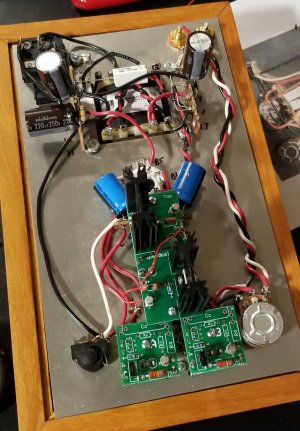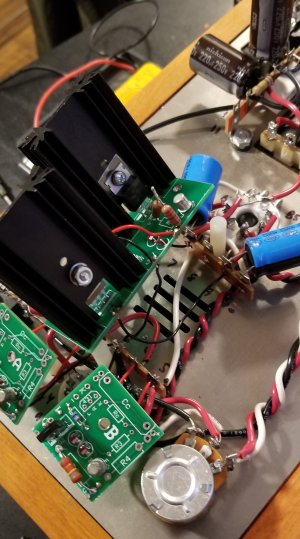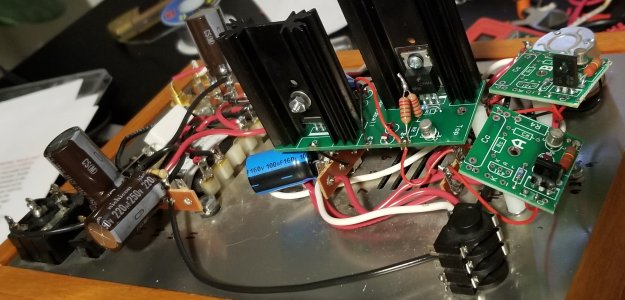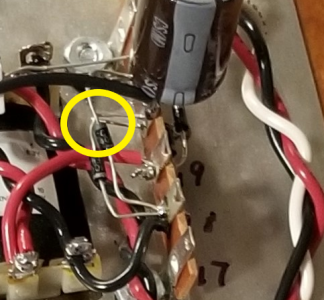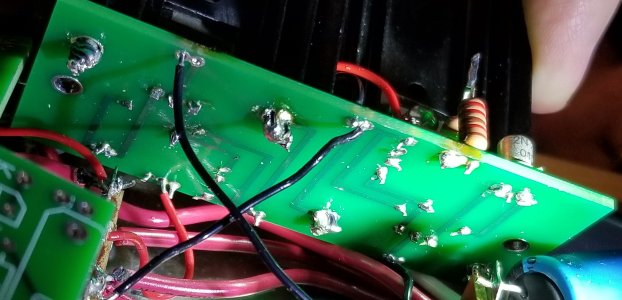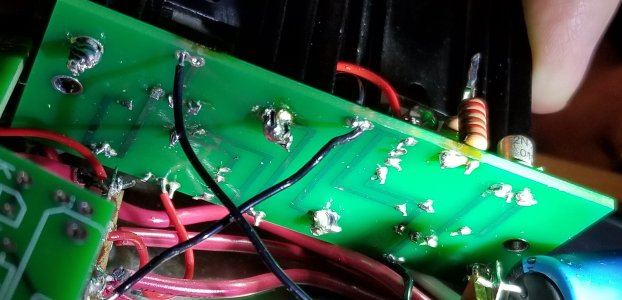Huffstutler
New member
Hello all,
After successfully building my crack and making sure that it worked well, I went to add my speedball upgrade, (older generation), and now the resister not over the transformer but right next to the transformer is putting off a little puff of smoke (at least that what it looks like to me)
additionally, on the main board of the speedball, I have three LEDs that light up, and the one that doesn't light up is next to one that lights up very bright. the LEDs on the other two speedball boards light up very dimly. One of the LEDs on the nine pin socket also appears to be dim, next to one that lights up bright.
When I first started to measure the voltage, terminal one was perfect while terminal two barley measured at all. I stopped measuring when I noticed the smoke and am worried about getting further measurements. Do you lads have an idea about how I best go about troubleshooting this?
After successfully building my crack and making sure that it worked well, I went to add my speedball upgrade, (older generation), and now the resister not over the transformer but right next to the transformer is putting off a little puff of smoke (at least that what it looks like to me)
additionally, on the main board of the speedball, I have three LEDs that light up, and the one that doesn't light up is next to one that lights up very bright. the LEDs on the other two speedball boards light up very dimly. One of the LEDs on the nine pin socket also appears to be dim, next to one that lights up bright.
When I first started to measure the voltage, terminal one was perfect while terminal two barley measured at all. I stopped measuring when I noticed the smoke and am worried about getting further measurements. Do you lads have an idea about how I best go about troubleshooting this?

